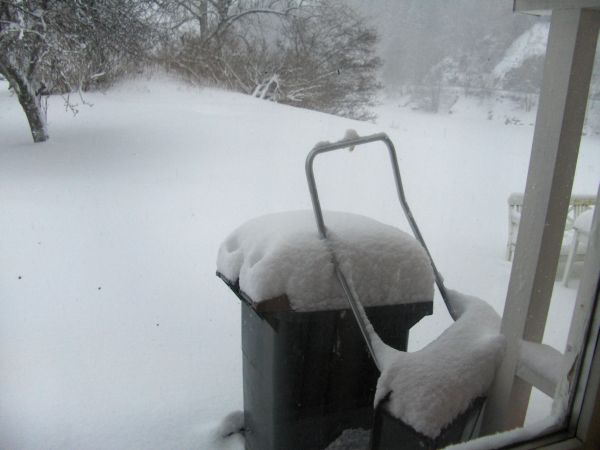Oh yes, it is winter.
A little slice of life here! After all, life is good to have too. ^_^
Although when you put things in the deep freezer, it is in order to stop all life processes, such as bacteria or fungi, and even the natural chemical reactions in organic matter. The recommended temperature for a deep freezer is -18C, or just below zero F.
This morning, it was -19C. It bottomed out at -20C around noon. Luckily I work indoors. But seriously! It’s like, you expect to see frozen mammoths littering the roadside, and rampaging 20 feet tall snowmen battling your city’s superheroes… OK, so the 20 feet snowmen are in City of Heroes, but it kind of fits the atmosphere. Â It certainly does not seem to fit THIS Earth. The usual temperature here on Norway’s south coast used to be around -5 in the last half of December, but for some years until recently we began having green winter until well into January. And even in February, having -20C here on the south coast was rare if it even happened.
I admit that you don’t really have a guarantee of warm weather when you settle in Scandinavia. Sure, the combination of the Gulf stream, the Icelandic upwelling and a fairly steady wind from the west (thanks to the Coriolis effect) makes mild winters pretty likely here, unlike Alaska, which is not so far north of here. But it is not like there haven’t been colder winters throughout history. Just not in my lifetime, or the lifetime of my parents. But there was one 94 years ago. So two since people started measuring temperatures around here. I am sure there were many more during the Maunder Minimum. (A couple generations around the year 1700, when the big rivers of Europe were frozen, and even some of the straits.)
Until recently, it was assumed that the Maunder Minimum affected all the world. But this has been cast in doubt recently, just in time for the current low-sunspot period. It may have seemed like the world was freezing because western Europe pretty much was the world at the time, it being a low tide for the few other civilizations still around, like China. Â Scientists predicted a couple years or so ago that the new sunspot minimum would mainly affect western Europe, and it looks like they were right. It seems to be business as usual elsewhere.
It is pretty much business as usual here too, only more expensive. But if something happens to the power grid, then may the Light help us all. Well, I have the wood stove and candles, I could probably stay alive for a few weeks with careful planning. But sometimes I just stop and think about how vulnerable we have made ourselves and our grand civilization. As everything become more and more advanced and abstract and specialized, how long will it last until civilization collapses from want of a nail?
At least I won’t need a freezer for some days, it seems.
Oh, and the snow you see in that picture? It cost me 700 calories (kcal in European) to clear it all away. ^_^

